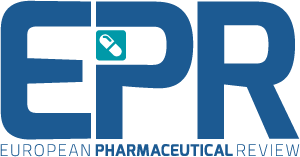Alzheimer’s drug requires strengthened pharmacovigilance approach
Posted: 7 March 2025 | Catherine Eckford (European Pharmaceutical Review) | No comments yet
Ongoing real-world safety and effectiveness monitoring of the Alzheimer’s drug lecanemab is needed to protect patients long-term, drug safety researchers urge.


A paper published by the Drug Safety Research Unit (DSRU) in the British Journal for Clinical Pharmacology, has asserted the need for ongoing assessment of the safety and effectiveness of the Alzheimer’s drug lecanemab in the real-world clinical setting.
The Medicines and Healthcare products Regulatory Agency (MHRA) approved the drug for use in the UK in August 2024. Several months later, in November, the European Medicines Agency (EMA) granted approval of the medicine.
Strengthening the lecanemab pharmacovigilance approach
However, following announcement of the MHRA’s decision in August last year, the National Institute for Health and Care Excellence (NICE) voiced that the benefits of lecanemab “are too small” to warrant making the drug available on the NHS. In its draft recommendation, NICE cited that with lecanemab there is a “a lack of evidence on its long-term effects”.
Presently, while researchers from DSRU highlighted the benefits of lecanemab for certain patients with Alzheimer’s, echoing NICE, they stated that further assessment is needed to determine whether those advantages are clinically meaningful for patients long term.
“Any measure of clinical meaningfulness derived from the analysis of efficacy in [randomised controlled trials] may not necessarily be translatable to that observed in the real-world; thus there is a clear need to monitor effectiveness data in real-world clinical settings, particularly over a longer term duration of treatment beyond 18 months,” the DSRU researchers wrote.
Additionally, further data is needed to understand potential risks associated with the medicine. Furthermore, they asserted the need for a strengthened approach for lecanemab pharmacovigilance in a larger and more diverse population.
“Post-marketing surveillance of safety and effectiveness should inform a robust, ongoing review and assessment of the benefit-risk profile of lecanemab using a variety of available real-world data (RWD) sources, with an understanding of the strengths and limitations of each data source,” the researchers added.
“As more [real-world data] begins to emerge for lecanemab across various clinical settings, the ongoing assessment of safety evidence is crucial to protect the health of patients with Alzheimer’s,”
“The most advantageous RWD sources for the ongoing safety monitoring of lecanemab are likely to include spontaneous reporting data to provide for the early detection of adverse drug reactions (ADRs), with more detailed data retrieved from disease- or drug-specific registries and electronic health records. Where available, data from observational cohort studies and patient data (through the collection of patient-reported outcomes [PROs], for example) should inform the ongoing assessment of the benefit-risk profile,” Amy Bobbins, lead author of the paper and Senior Research Pharmacist at the DSRU told EPR.
“As more [real-world data] begins to emerge for lecanemab across various clinical settings, the ongoing assessment of safety evidence is crucial to protect the health of patients with Alzheimer’s,” Bobbins explained.
Bobbins also shared with EPR that with the expected use of lecanemab restricted to a small number of patients, “generation of real-world data (RWD) in a larger, broadened and more diverse patient population may be slow, challenging the timely detection of adverse events, particularly rare ones”. This could therefore pose a major challenge for strengthening the lecanemab pharmacovigilance approach.
“Despite any identified risks from clinical trials, lecanemab provides a significant step forward in Alzheimer’s disease research. We should celebrate this step forward while encouraging the generation of diverse RWD sources regarding the safety and effectiveness of the drug,” Bobbins concluded.
Related topics
Biologics, Clinical Development, Clinical Trials, Data Analysis, Drug Markets, Drug Safety, Industry Insight, Proteins, Regulation & Legislation, Research & Development (R&D), Therapeutics
Related organisations
Drug Safety Research Unit (DSRU), Medicine and Healthcare products Regulatory Agency (MHRA), National Institute for Health and Care Excellence (NICE)









